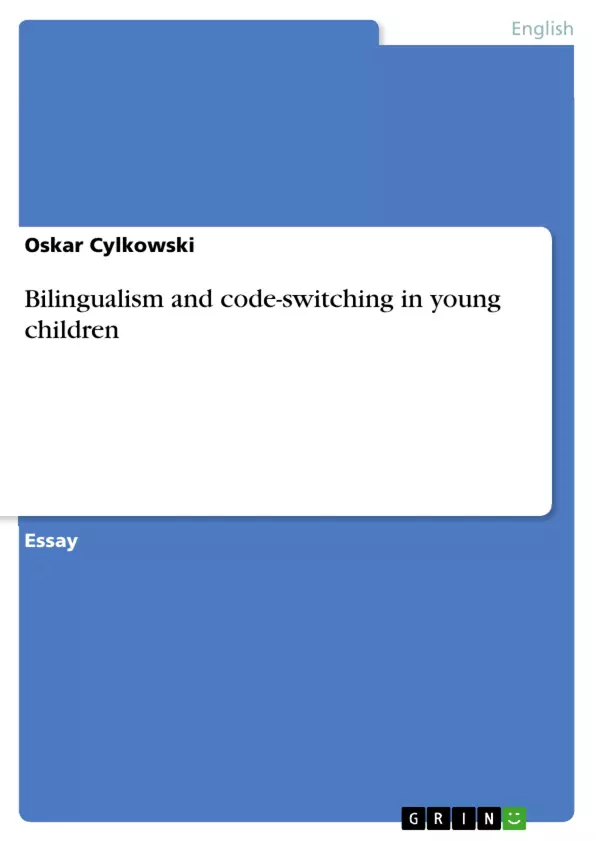The Essay begins with some general aspects of bilingualism and the different kinds of code-switching (CS). After a short explanation, the author exemplifies code-switching with the help of two studies and a model.
In the research field of bilingualism, CS received the highest interest in the past few years. It can be defined as the ability of bilinguals, who are able to switch easily between two or more languages. It is also common, that bilinguals integrate their two languages to a given degree.
While the first view of CS is the psycholinguistic one, it is also important to mention the sociolinguistic view on CS. It is important to understand, that there is a different behaviour of CS between women versus men, middle-class versus working-class, and other social groups. It is claimed, that the language manner and use are related to the speakers' social identity. From the sociolinguistic point of view, it can be argued, that sociolinguists can help us to understand CS in a different way.
Inhaltsverzeichnis (Table of Contents)
- Introduction
- Bilingualism
- Language Mixing
- Study - Phoneme triggered lexical decision task
- Study - Guest words
- Effects of guest word recognition
- The TRACE model
- Conclusion
Zielsetzung und Themenschwerpunkte (Objectives and Key Themes)
This essay aims to explore the phenomenon of code-switching (CS) in bilingualism. It examines the cognitive processes involved in language switching and the role of CS in reflecting social constructs. The essay also presents two studies that investigate the lexical access of code-switched words and discusses the theoretical models that explain these findings.
- Cognitive processes of language switching
- Social influences on code-switching
- Lexical access in bilinguals
- Theoretical models of code-switching
- Intersentential and intrasentential code-switching
Zusammenfassung der Kapitel (Chapter Summaries)
- Introduction: This chapter introduces the concept of code-switching (CS) and its significance in bilingualism research. It discusses the psycholinguistic and sociolinguistic perspectives on CS and highlights the various types of contact phenomena that it encompasses.
- Bilingualism: This chapter explores the differences between monolingual and bilingual language modes. It delves into the concepts of static and dynamic interferences and discusses different theories regarding the storage of language information in the bilingual brain.
- Language Mixing: This chapter focuses on the phenomenon of language mixing, which encompasses code-switching and borrowing. It differentiates between intersentential and intrasentential code-switching and provides examples of borrowing in language.
- Study - Phoneme Triggered Lexical Decision Task: This chapter presents a study by Soares and Grosjean that investigates the lexical access of code-switched words in bilinguals. It discusses the experimental setup, findings, and explanations for the results, highlighting the impact of residual activation of the other language and the search processes involved in lexical access.
Schlüsselwörter (Keywords)
Code-switching, bilingualism, language mixing, lexical access, phoneme triggered lexical decision task, intersentential code-switching, intrasentential code-switching, borrowing, static interferences, dynamic interferences, theoretical models, TRACE model.
- Quote paper
- Oskar Cylkowski (Author), 2015, Bilingualism and code-switching in young children, Munich, GRIN Verlag, https://www.grin.com/document/490476



